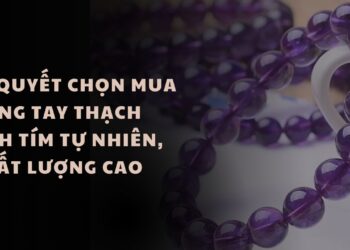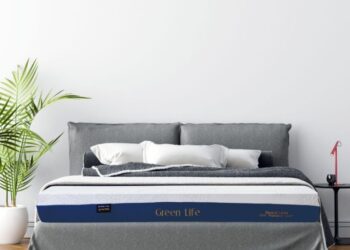Granted, “pocketable” is a bit of a stretch for a camera that measures 4.4 inches wide by 2.6 inches high by 1.6 inches deep, and weighs approximately 9.6 ounces. On the other hand, similar cameras around this size don’t have a 30x, f3.5-6.3, 24-720mm lens. Nor do they have several of this camera’s other features that make it a leader in the category.
There are, however, two things missing that perhaps make it a little less appealing to photo enthusiasts: raw capture and a small, 1/2.3-inch-type sensor. If you want a large-sensor compact or more than just JPEG images, you’ll have to wait, or buy something with less zoom.
Otherwise, this is a very nice travel zoom camera.
Picture quality The photo quality from the Sony Cyber-shot DSC-HX50V is very good to excellent, though it really depends on your needs and expectations. If you’re considering buying this instead of a high-resolution digital SLR, you’d be disappointed. A 20-megapixel sensor doesn’t guarantee good image quality and most pictures from the camera viewed at full size aren’t impressive. However, there’s plenty of usable resolution here, particularly if you’re shooting with plenty of light.
Below ISO 400, shots look good printed up to 10×13 inches, which is more than most people need. Getting a very good 8×10 with some enlarging and cropping is certainly possible, too. And if you never print your shots, the HX50’s photos look great on a computer screen or HDTV with minor cropping or enlarging.
As the camera goes above ISO 400, subjects do get noticeably softer, but shots are usable at small sizes up to ISO 1600. If you want better low-light shots of still subjects, Sony’s Handheld Twilight mode still produces some of the best high-ISO photos I’ve seen from a point-and-shoot. However, I wouldn’t bother using the two highest ISOs, as the results look more like artist’s renderings than photos and they have off colors.
Again, the HX50V is not a dSLR (it can’t even capture raw images), but for people looking for a long lens and some better control over results than the average point-and-shoot offers, it’s a safe bet. (You can read more about the camera’s image quality as well as download full-size samples in the slideshow above.)
The HX50V’s video is as good as its photos. With plenty of light you get nice-looking, smooth video when recording at the camera’s maximum AVCHD resolution of 1080/60p. There is very little trailing on moving subjects or judder when panning the camera, though some is noticeable when viewed at larger screen sizes. In low light, movies do have more visible noise and artifacts and look softer but are still very good. You do have use of the zoom lens, which you may hear moving in quieter scenes. Audio quality in general is very good, too, but should you want better (and also to do away with the lens motor noise) you can add a stereo mic to the camera’s accessory shoe.
Shooting performance In general, the HX50V is a pretty fast camera. From off to first shot, for example, takes 1.9 seconds. Given that the camera has to turn on and push the lens out, focus, and shoot in that amount of time, that’s reasonably fast. In my tests, the time from pressing the shutter release to capture without prefocusing is 0.2 second in bright lighting and 0.4 second in low-light conditions, which puts it on par with the fastest cameras in this category.
Shot-to-shot times vary depending on how much processing the camera has to do, but overall they felt fast. In my lab tests the camera took less than 0.8 second between shots. However, if you use a mode or high-ISO setting that requires extra processing, it can be a couple of seconds before you’re able to shoot again. Using the flash will also drive the wait up, slowing it to about 2.1 seconds between shots.
Burst shooting carries a similar penalty. Though the HX50V can take 10 shots per second at full resolution, once it’s done shooting, it keeps you waiting a little less than 1 second per shot while it stores the images. There’s also no option to continuously shoot with AF, so focus and exposure are set with the first photo.
Design and features Aside from being slightly bigger, the HX50V doesn’t look all that different from its predecessor, the Cyber-shot HX30V, at least at first glance. Turn the camera around and the differences are less subtle. Perhaps the biggest change is that there is a second dial on top: in addition to the one for changing shooting modes, there is now one for quickly adjusting exposure compensation.
The Custom button, which can be used for fast access to ISO, white balance, metering, and Smile Shutter, Sony’s smile-activated shutter release, has been moved from the top to the back. That helped make room for the new Multi Interface Shoe.
The shoe can be used with an external flash that costs $150, an external stereo mic that runs around $160, and an electronic viewfinder that costs the same as the camera: $450. Now, it’s great that you can add these things, but hopefully Sony will release slightly less expensive options, especially the EVF option.
Sony did put in a new pop-up flash, which needs to be triggered manually with a button on back. Despite the fact that the flash lift mechanism looks like it can be angled up and used as an indirect bounce flash, it can’t. It is locked in a forward position, so if there’s one accessory worth purchasing for better photos, it’s the external flash.
Key specs Sony Cyber-shot DSC-HX50V Price (MSRP) $449.99 Dimensions (WHD) 4.4×2.6×1.6 inches Weight (with battery and media) 9.6 ounces Megapixels, image sensor size, type 20 megapixels, 1/2.3-inch backside-illuminated (BSI) CMOS LCD size, resolution/viewfinder 3-inch LCD, 921K dots/None Lens (zoom, aperture, focal length) 30x, f3.5-6.3, 24-720mm (35mm equivalent) File format (still/video) JPEG/AVCHD (.MTS); MPEG-4 AVC/H.264 (.MP4) Highest resolution size (still/video) 5,184×3,888 pixels/1,920×1,080 at 60fps (progressive; 28Mbps) Image stabilization type Optical and digital Battery type, CIPA rated life Li-ion rechargeable, 400 shots Battery charged in camera Yes; via USB to AC adapter or computer Storage media SD/SDHC/SDXC; Memory Stick Pro Duo
There’s also a Multi Terminal USB port on the right side. It’s a standard Micro-USB port, but it’s used for charging the camera and transferring photos and videos to a computer, and it can be used with accessories like the RM-VPR1 remote control. A Micro-HDMI port is on the bottom of the camera.
The camera’s battery and memory card slot are under a locking sliding door on the bottom. The standard tripod mount is right next to the door’s hinge, so you’ll more than likely need to remove any tripod or quick-mount plate to get to the battery and memory card. On the upside, since the camera is charged by USB and you can do transfer by USB or Wi-Fi, you can avoid opening it for the most part. Battery life is very good, all things considered. Keep in mind that using the zoom lens a lot, cranking up the screen brightness, using the built-in GPS or Wi-Fi, or recording movies will shorten it.
As for the Wi-Fi, it works well, too, and it’s pretty uncomplicated to set up. The Wi-Fi can be used to send photos to an iOS or Android device or back up your shots onto a computer. You can also use an iOS or Android device as a wireless remote control, though there is a considerable lag.
Sony’s PlayMemories Home software (embedded in the camera’s internal memory) used for sending to a computer is Windows only, but you can use the camera’s Wi-Fi to connect directly to a Mac instead of over a network. (This, by the way, will also allow you to convert AVCHD video files to MP4 format on the fly.) If you’re not comfortable with poking around with basic wireless settings on your computer or smartphone, you’ll probably want to enlist the help of a techie friend to walk you through it.
General shooting options Sony Cyber-shot DSC-HX30V ISO sensitivity (full resolution) Auto, 100, 200, 400, 800, 1600, 3200, 6400, 12800 White balance Auto, Daylight, Cloudy, Fluorescent white, Fluorescent natural white, Fluorescent day white, Incandescent, Flash, Custom Recording modes Easy, Intelligent Auto, Superior Auto, Program, Shutter Speed Priority, Aperture Priority, Manual, Memory Recall, SCN, Intelligent Sweep Panorama, Movie Focus modes Multi AF, Center AF, Spot AF, Face Detection (Adult, Child), Manual Macro 0.4-inch (Wide); 5.6 feet (Tele) Metering modes Multi, Center, Spot Color effects Standard, Vivid, Real, Sepia, B&W Burst mode shot limit (full resolution) 10 shots
One thing’s for sure with the HX50V: there is no shortage of shooting options.
For those who like to leave it in auto, there are three options: Easy, Intelligent Auto, and Superior Auto. Easy mode takes away all options except for image size (large or small) and enlarges onscreen text. Intelligent Auto picks from 33 scene types and turns on face detection, dynamic range optimization, and image stabilization.
Superior Auto takes Intelligent Auto and adds three multishot modes: Handheld Twilight, Anti Motion Blur, and Backlight Correction HDR. These multishot modes can also be selected as distinct modes in Scene options, along with 13 others like Soft Skin, Gourmet, and Pet. Note: These multishot modes work by rapidly capturing several images and layering them to remove things like noise and blur from hand shake. However, your subject has to be absolutely still for them to work properly.
For the past several iterations of this camera, Sony included only a full manual mode. The HX50V gets that plus shutter-speed and aperture priority modes. Shutter speeds range from 30 seconds to 1/1,600 of a second. Apertures at the wide end include f3.5, f4.0, f4.5, f5.0, f5.6, f6.3, f7.1, and f8.0 for wide and f6.3, f7.1, and f8.0 for telephoto.
The Program mode will handle shutter speed and aperture while you take care of everything else, including color modes, contrast, color saturation, and sharpness. If you come up with a group of settings you like, the Memory Recall mode lets you store three groups of settings for quick shooting with your preferences.
In these modes you also have access to nine Picture Effects such as Toy, HDR Painting, Miniature, and Watercolor. (A few of these are available in the auto and panorama modes, too, and can be used for both photos and movies.) In addition to that, you can make minor adjustments to contrast, saturation, noise reduction, and sharpness as well as shift white balance and chose from five color modes. So, yeah, lots to experiment with in the HX50V.
The HX50V’s movie mode is also one of the best you’ll find in its category (though there is no control over shutter and aperture). It’s capable of recording at 1080/60p at 28Mbps in AVCHD. It’ll record at lower bit rates in AVCHD too, or you can switch to MP4 format at resolutions of up to 1,440×1,080 pixels. While there is a dedicated movie mode, you can also just press the record button anytime you want to start shooting. Pressing the shutter release while you’re recording will grab 15-megapixel stills (though this is not available when recording at 1080/60p).
Conclusion Sony’s Cyber-shots continue to be some of the best point-and-shoots available, and the DSC-HX50V is no exception. The 20-megapixel resolution might be helpful when it comes to image stabilization, digital zoom, and, in some respects low-light image quality, but it doesn’t directly translate into better photos that can be used at larger sizes. That said, this thing can take some nice photos and video, the performance is fast under normal shooting conditions, and it does have a lot of shooting options for every level of photographer. And maybe sometime soon we’ll get some version of it with a larger sensor and raw capture.






